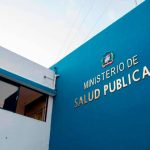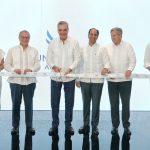Effective physical distancing is achieved in Santo Domingo Metro and OMSA

Photos of the Santo Domingo Metro yesterday ./22/05/2020.
Between 9:00 a.m. and noon, the low flow of passengers in the Santo Domingo Metro and the Metropolitan Office of Bus Services (OMSA) allowed them to quickly enter the means of transportation and comply with the distance physical necessary to prevent spreading Covid-19 during the third day of the first phase of economic recovery.
However, at peak times guaranteeing physical distance within these means of transport, which must operate at 30% of their capacity by order of the Executive Power, has led to long lines of people forming in some stations and stops that they must wait up to an hour to travel to their destination.
Upon entering the Metro stations, a security officer supervises the use of the masks and sprays people’s feet with disinfectant.
In addition, you can see marked stripes on the floor that indicate the distance to be kept in the box office area and on the platforms, while inside the wagons some footprint silhouettes and some signs on some seats fulfill this function.
In the case of the OMSA, an agent from the General Directorate of Traffic Safety and Land Transportation (Digesett) controls the number of passengers that enter the buses according to the directions of the driver or a supervisor to ensure that there is only one passenger per seat.
Agglomeration due to failure. The crowding of passengers that took place last Wednesday afternoon -the first day of the economic recovery- that was broadcast by videos on social networks was attributed by the Office for the Reorganization of Transport (Opret) to a technical failure in a security element of one of the trains.
“Yesterday at 5:38 in the afternoon, and close to the end of the service, a train experienced a technical failure between the station Amín Abel, Joaquín Balaguer, in the direction of Centro de los Héroes and Mamá Tingó and this caused a six-minute delay. It was a failure in one of the train’s security elements,” explained Opret’s director of operations, Ariel Rodríguez.
Homeless drivers. Bus and minibus drivers have stated that they feel abandoned because the government still does not allow them to carry people, while the Metro and the OMSA do.
For their part, public car drivers and motorcyclists who continue to operate complain that they do not receive government aid while their income has been reduced by 33% due to the shortage of passengers.
José Luis Mejía, a driver on the route of Avenida 27 de Febrero, explained that the number of public cars working on that road has been reduced by half and estimated that the flow of passengers these days has been 70 to 80% below the usual.
For his part, Francisco Jiménez, secretary of the motoconchos route on said avenue, stated that some motoconchistas only manage to make RD $ 100 a day.

















